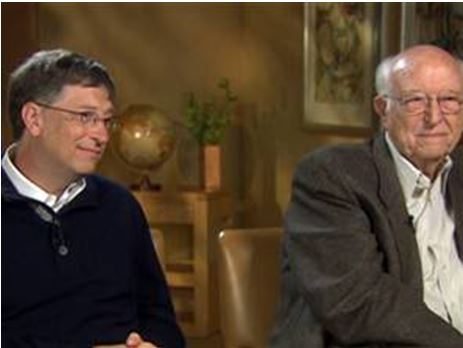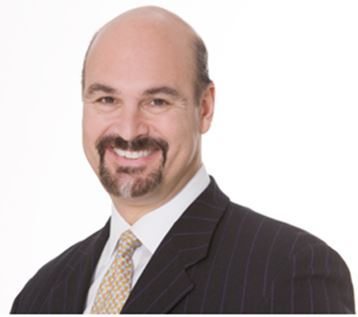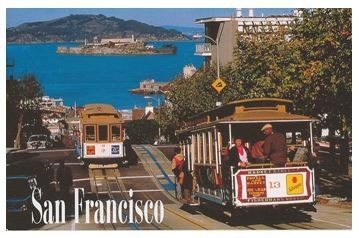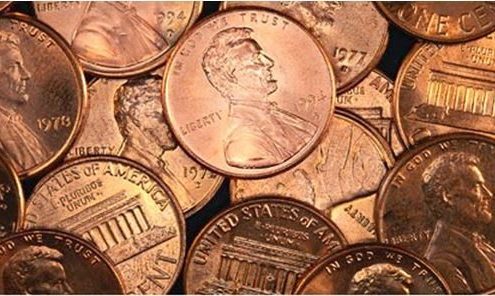
Global Market Comments
September 18, 2013
Fiat Lux
Featured Trade:
(THE ULTRA BULL ARGUMENT FOR GOLD),
(GLD), (GDX), (ABX), (SLV),
(AN EVENING WITH BILL GATES, SR.)
SPDR Gold Shares (GLD)
Market Vectors Gold Miners ETF (GDX)
Barrick Gold Corporation (ABX)
iShares Silver Trust (SLV)
I had a chat with Bill Gates, Sr. recently, co-chairman of the Bill and Melinda Gates Foundation, the world?s largest private philanthropic organization. There, a staff of 800 helps him manage $30 billion.
The foundation will give away $3.1 billion this year, a 10% increase over last year. Some $1.5 billion will go to emerging nation health care, and another $750 million to enhance American education.
The foundation?s spending in Africa has been so massive, that it is starting to have a major impact on conditions, and is part of the bull case for investing.
The fund happens to be one of the best managed institutions out there, having sold the bulk of its Microsoft (MSFT) stock just before the dotcom bust and moving the money into Treasury bonds.
Mr. Gates? pet peeve is the precarious state of the US K-12 public education system, where teaching is not as good as it could be, expectations are low, and financial incentives and national standards are needed.
When asked about retirement, he says ?having a son with a billion dollars puts a whole new spin on things.?? Now razor sharp at 87, his favorite treat is the free NetJet miles he gets from his son Bill every year. In his memoir Showing up for Life, he says a major influence on his life was his Scoutmaster 70 years ago.
Being an Eagle Scout myself, I quickly drilled him on some complex knots, and he whipped right through all of them.
The world needs more Bill Gates Srs.
Global Market Comments
September 17, 2013
Fiat Lux
Featured Trade:
(JOIN THE INVEST LIKE A MONSTER SAN FRANCISCO TRADING CONFERENCE),
(IT?S ALL ABOUT LARRY),
(SPY), (TLT), (FXY), (YCS), (FXA), (MSFT),
(LUNCH WITH ROBERT REICH)
SPDR S&P 500 (SPY)
iShares Barclays 20+ Year Treas Bond (TLT)
CurrencyShares Japanese Yen Trust (FXY)
ProShares UltraShort Yen (YCS)
CurrencyShares Australian Dollar Trust (FXA)
Microsoft Corporation (MSFT)
I am pleased to announce that I will be participating in the Invest Like a Monster Trading Conference in San Francisco during October 25-26. The two-day event brings together experts from across the financial landscape who will improve your understanding of markets by a quantum leap and measurably boost your own personal trading performance.
Tickets are available for a bargain $399. If you buy the premium $499 package you will be invited to the Friday 6:00 pm VIP cocktail reception, where you will meet luminaries from the trading world, such as Trademonster?s Jon and Pete Najarian, Guy Adami, Jeff Mackey, and of course, myself, John Thomas, the Mad Hedge Fund Trader. All in all, it is great value for the money, and I?ll personally throw in a ride on the City by the Bay?s storied cable cars for free.
Jon Najarian is the founder of OptionMonster, which offers clients a series of custom crafted computer algorithms that give a crucial edge when trading the market. Called Heat Seeker ?, it monitors no less than 180,000 trades a second to give an early warning of large trades that are about to hit the stock, options, and futures markets.
To give you an idea of how much data this is, think of downloading the entire contents of the Library of Congress, about 20 terabytes of data, every 30 minutes. His firm maintains a 10 gigabyte per second conduit that transfers data at 6,000 times the speed of a T-1 line, the fastest such pipe in the civilian world. Jon?s team then distills this ocean of data on his website into the top movers of the day. ?As with the NFL,? says Jon, ?you can?t defend against speed.?
The system catches big hedge funds, pension funds, and mutual funds shifting large positions, giving subscribers a peek at the bullish or bearish tilt of the market. It also offers accurate predictions of imminent moves in single stock and index volatility.
Jon started his career as a linebacker for the Chicago Bears, and I can personally attest that he still has a handshake that?s like a steel vice grip. Maybe it was his brute strength that enabled him to work as a pit trader on the Chicago Board of Options Exchange for 22 years, where he was known by his floor call letters of ?DRJ.? He formed Mercury Trading in 1989 and then sold it to the mega hedge fund, Citadel, in 2004.
Jon developed his patented algorithms for Heat Seeker? with his brother Pete, another NFL player (Tampa Bay Buccaneers and the Minnesota Vikings), who like Jon, is a regular face in the financial media.
In order to register for the conference, please click here. There you will find the conference agenda, bios of the speakers, and a picture of my own ugly mug. I look forward to seeing you there.
Cling! Cling!
 Jon Najarian
Jon Najarian
Global Market Comments
September 16, 2013
Fiat Lux
Featured Trade:
(NOVEMBER 1 SAN FRANCISCO STRATEGY LUNCHEON),
(CATCHING UP WITH ECONOMIST DAVID HALE),
(EEM), (GREK), (IWW), (EWJ), (NGE), (EWJ), (FXY), (YCS)
(TESTIMONIAL)
iShares MSCI Emerging Markets (EEM)
Global X FTSE Greece 20 ETF (GREK)
iShares Russell 3000 Value Index (IWW)
iShares MSCI Japan Index (EWJ)
Global X Nigeria Index ETF (NGE)
iShares MSCI Japan Index (EWJ)
CurrencyShares Japanese Yen Trust (FXY)
ProShares UltraShort Yen (YCS)
Come join me for lunch at the Mad Hedge Fund Trader?s Global Strategy Update, which I will be conducting in San Francisco on Friday, November 1, 2013. An excellent meal will be followed by a wide-ranging discussion and an extended question and answer period.
I?ll be giving you my up to date view on stocks, bonds, currencies, commodities, precious metals, and real estate. And to keep you in suspense, I?ll be throwing a few surprises out there too. Tickets are available for $191.
I?ll be arriving at 11:00 and leaving late in case anyone wants to have a one on one discussion, or just sit around and chew the fat about the financial markets.
The lunch will be held at a private club in downtown San Francisco near Union Square that will be emailed with your purchase confirmation.
I look forward to meeting you, and thank you for supporting my research. To purchase tickets for the luncheons, please go to my online store.
Global Market Comments
September 13, 2013
Fiat Lux
Featured Trade:
(MAD HEDGE FUND TRADER HITS ANOTHER NEW ALL TIME HIGH),
(FXY), (YCS), (FCX), (AAPL), (FXA),
(LOADING UP ON AUSTRALIA),
(FXA), (EWA), ($SSEC), ($BDI),
(UPDATE ON FREEPORT MCMORAN) (FCX)
CurrencyShares Japanese Yen Trust (FXY)
ProShares UltraShort Yen (YCS)
Freeport-McMoRan Copper & Gold Inc. (FCX)
Apple Inc. (AAPL)
CurrencyShares Australian Dollar Trust (FXA)
iShares MSCI Australia Index (EWA)
Shanghai Stock Exchange Composite Index ($SSEC)
Baltic Dry Index ($BDI)
Those who bought my Trade Alert on the Freeport McMoRan (FCX) October $28-$30 bull call spread at $1.68 or best two days ago will be thrilled to see the charts below. They were prepared by my friends at Stockcharts.com, who offer a very reasonable subscription technical analysis product (click here for their site http://stockcharts.com ).
After testing $26 three times over the past two years, the stock has forged a major long term bottom that appears unassailable. This almost perfectly matches the chart for the Chinese stock market, which is demonstrating almost identical strength. Conclusion: higher prices for copper and the rest of the commodity space.
Just thought you?d like to know.
Global Market Comments
September 12, 2013
Fiat Lux
Featured Trade:
(BUY APPLE ON THE DIP), (AAPL), (CHL)
(PICKING UP FREEPORT MCMORAN),
(FCX), (CU), (ECH), ($SSEC)
Apple Inc. (AAPL)
China Mobile Limited (CHL)
Freeport-McMoRan Copper & Gold Inc. (FCX)
First Trust ISE Global Copper Index (CU)
iShares MSCI Chile Capped (ECH)
Shanghai Stock Exchange Composite Index $SSEC
Global Market Comments
September 11, 2013
Fiat Lux
Featured Trade:
(MY 2013 STOCK MARKET OUTLOOK),
(SPY), (IWM), (AAPL), (TLT)
SPDR S&P 500 (SPY)
iShares Russell 2000 Index (IWM)
Apple Inc. (AAPL)
iShares Barclays 20+ Year Treas Bond (TLT)













